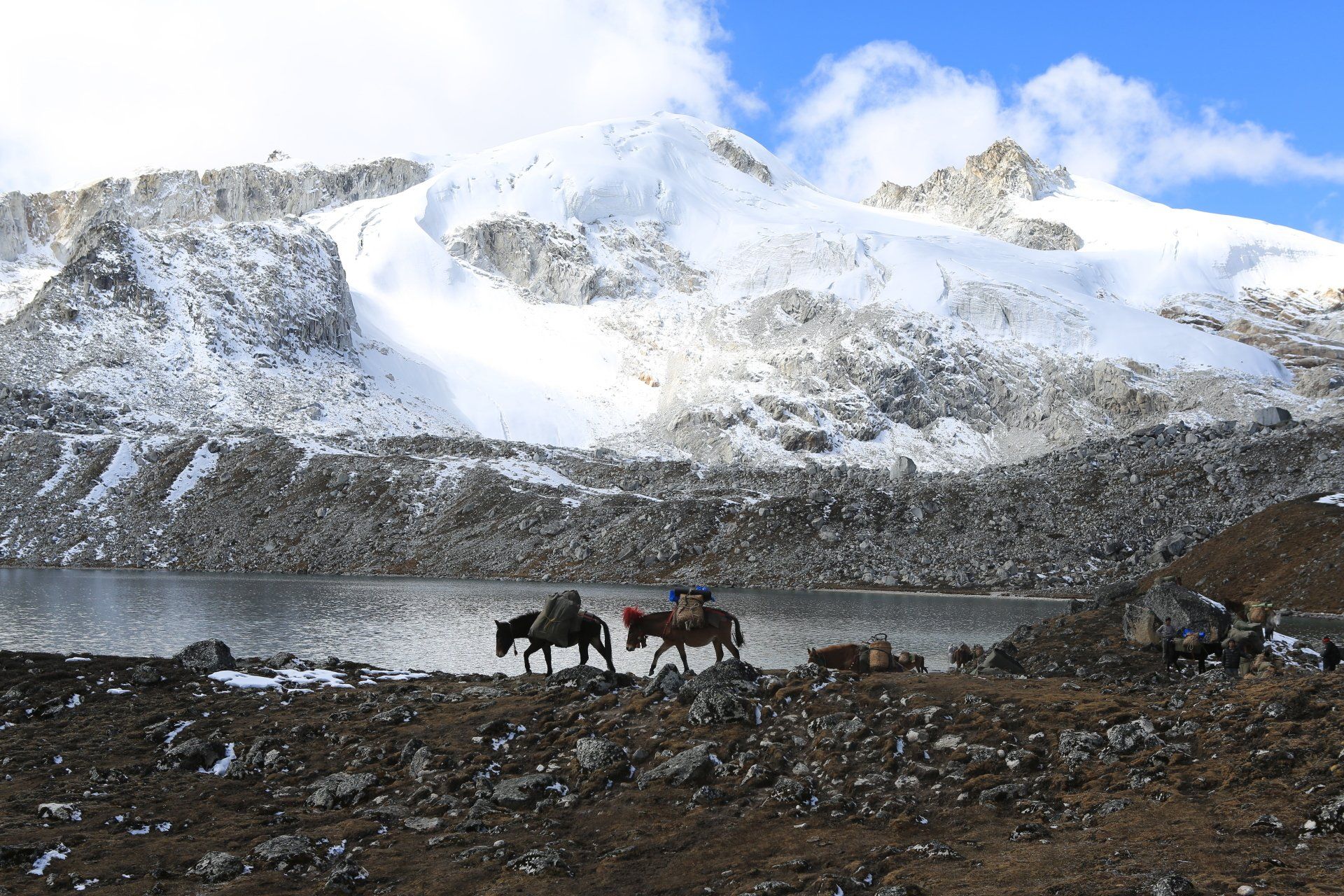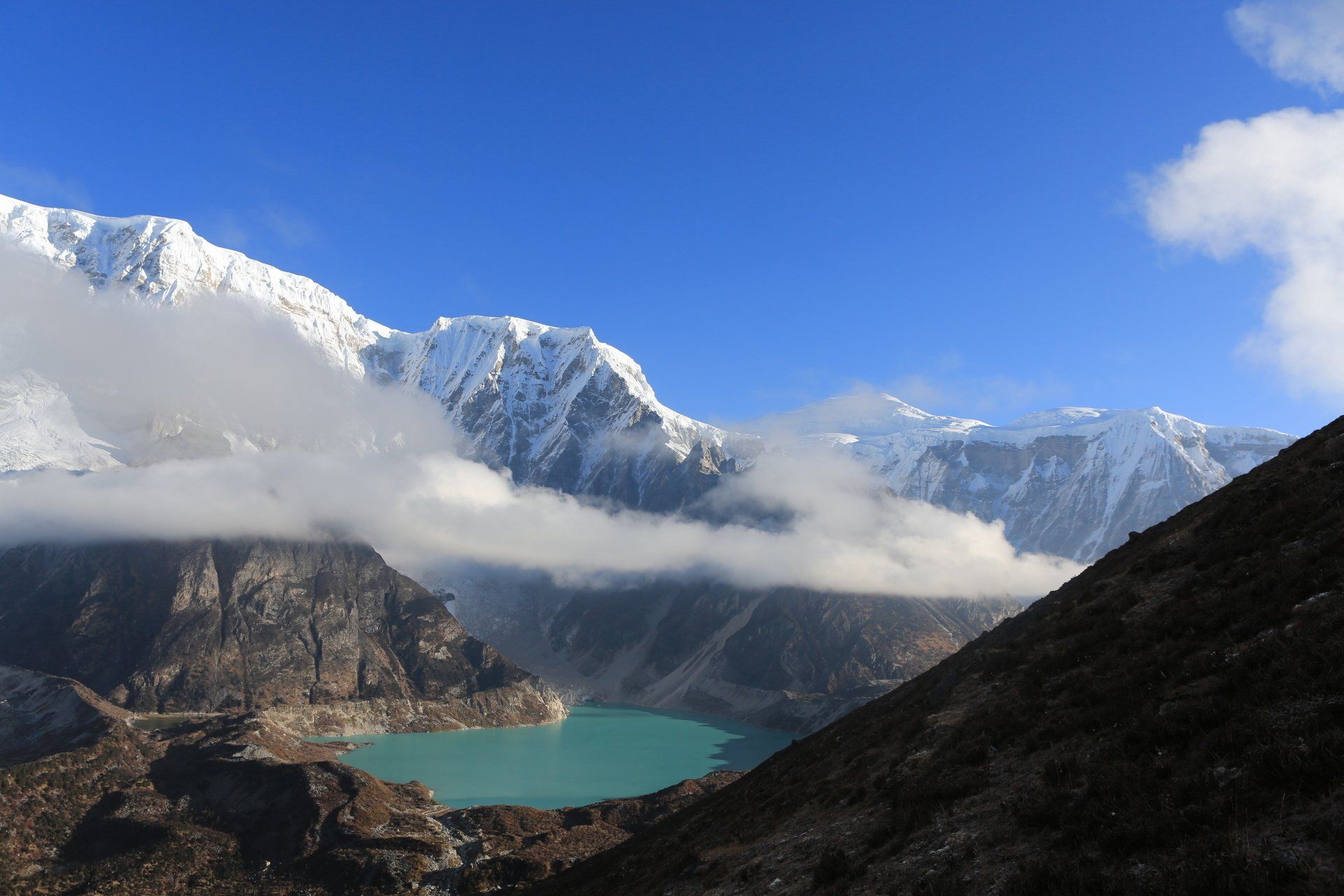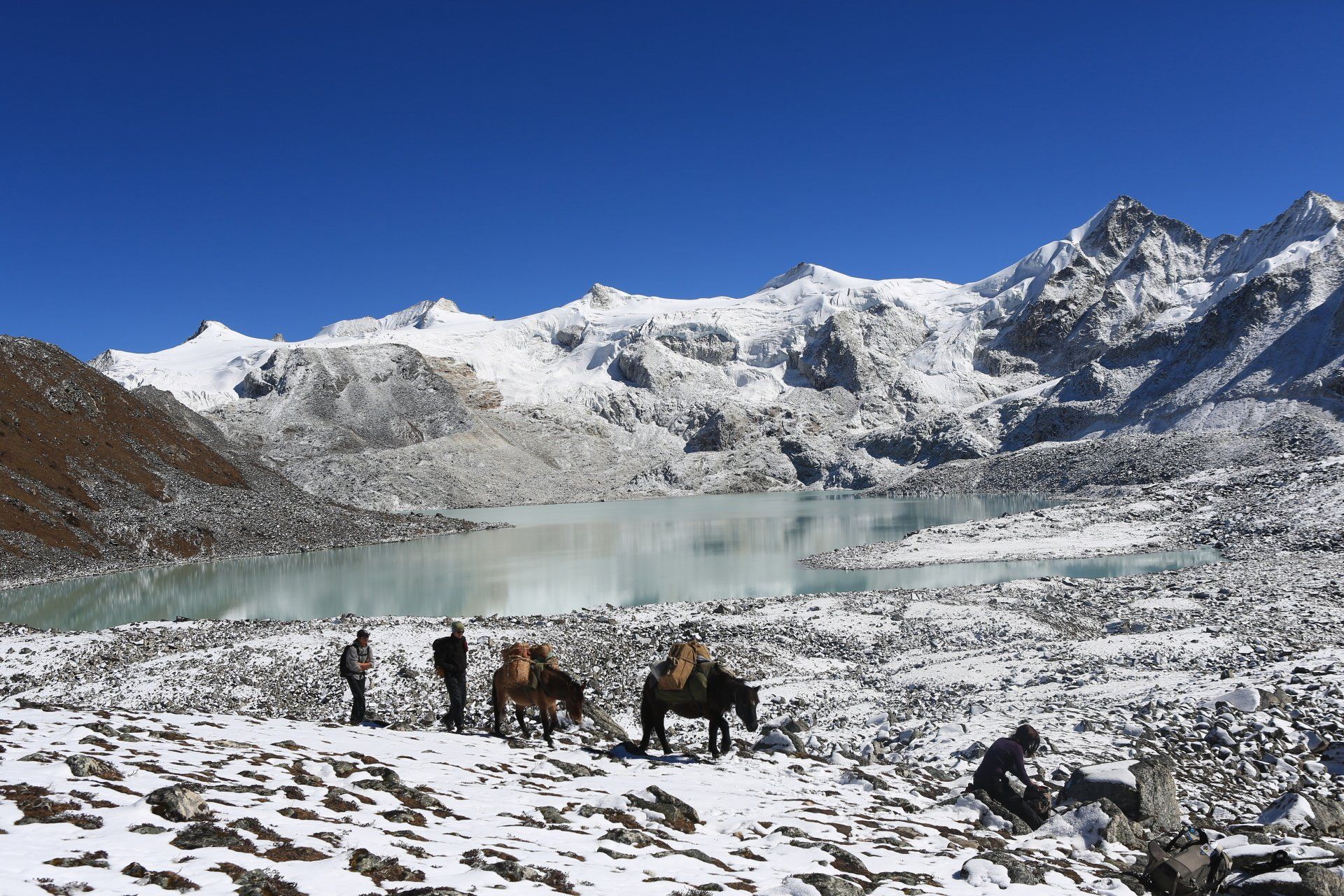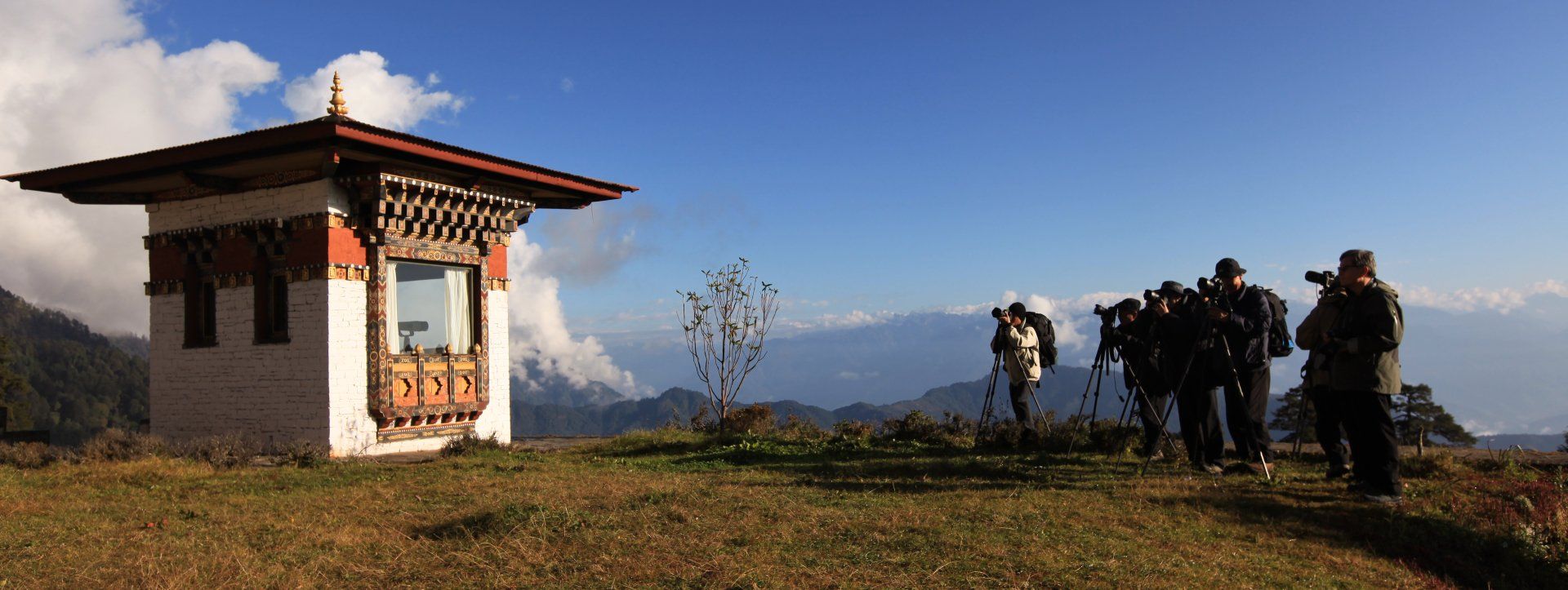Snowman Trek III
Snowman Trek - Part III
The World's Toughest Trek
Early Booking Offer
Got Cancelled Because of COVID 19
20% Off
till Dec 2022
Price From 3200 USD
Grab the Offer with USD 200 Deposit only
15 nights Challenging Snowman Trek - Part III
The Snowman Trek II is a beautiful trek starting from Paro passing through spectacular landscape dotted with snow capped mountains, high altitude turquoise green-blue glacial lakes, numerous isolated yak herders camps and coming out from the central valley of Trongsa.
Trek Facts...
Most Challenging Trek
Its one of the toughest trek in the world
Group Size - Max 10, Min 1
Since is a longest trek and for the safety, group size cannot be more than 10
Highest Altitude
You will be climbing as high as 5000 m above sea level
Accommodation
3 nights 3 star Hotel, 15 nights tents
Best Time
September -October
Highlights of Snowman Trek
- 15 nights shorter version of Snowman Trek
- Guided by a english speaking experienced trekking manager
- A dedicated team of Chef, helper and horseman throughout the trek
- If weather allows, the majestic view of himalayas throughout
- Very challenging yet very rewarding
- Success rate - 30% Only
- 23 Nights 24 Days - Trek Duration only
Places
Punakha, Gasa, Lingzhi, Trongsa
Pre - Departure Checklist
Camping in extreme weather such as cold temperatures and snowy conditions can be expected and extremely enjoyable; Camping on the snow can be peaceful, picturesque and an out door adventure.
All the accommodation while on Trek is twin sharing, double occupancy. Single occupancy in tents can be arranged on demand at an additional charge. All tents are Cold Weather Tents and designed for harsh weather and snowy conditions. Separate tents will be pitched for dinning, kitchen and rest room.
- Trekking Boots (broken in)
- Waterproof 3/4 season jacket and trousers
- Camp Footwear (light shoes/sandles/trainers)
- Several pairs of good quality socks
- T-Shirts - Highly recommended are synthetic T shirt styles that wick away moisture
- Thermal Underwear / layers
- Down jackets
- Warm mid layers (fleece/micro fibre)
- Trousers - Lightweight, loose fitting, trekking trousers, pants with zip-off bottoms
- Shorts
- Gaiters
- Tracksuit or fleece pants for evenings
- Sleeveless fleece and extra layers
- Warm Hat and sun Hat
- Scarf/neck warmer
- Gloves and Mitts - waterproof and warm
- Sunglasses with UV protection
- Head Torch (spare batteries)
- Sunscreen and Lip Balm
- Light weight towel
- Hand sanitizer gel
- Trail mix / nuts/ muesli bars
- Whistle
- Daypack - The daypack you select must have the capacity for the items you may be carrying on a day's walk: rain jacket, trousers, warm clothing, water bottle, camera equipment, washing items and other personal effects. A hip/waist strap provides additional comfort. You should consider daypacks of at least a 30 to 40-litre capacity. Horses will be carrying the rest of your luggage.
Whats Included?
Accommodations
- 2 nights at 3 star Hotels
- 23 Nights in Tents at the Campsite
- Good Quality Tents (Sleeping, Dining and Toilet)
Meals
- 24 lunches, 24 breakfast, 24 dinners
- Tea and Coffee on demand
- Bottled Water Throughout the Trip
- Packed Lunches and Snacks on demand
The Snowman Trek I is the complete and most beautiful of all as the trek passes through the base of Mount Gangkar Puensum at 7,570 meters the highest mountain of Bhutan and the highest unclimbed mountain in the world.
Itinerary
- Day 1: Punakha - Gasa – Koina
Distance: 22 Kms, Duration: 7 - 8 hours, Camp Altitude: 3,610 meters
- Day 2: Koina – LayaDescribe the item or answer the question so that site visitors who are interested get more information. You can emphasize this text with bullets, italics or bold, and add links.
- Day 3: Laya – RodophuDescribe the item or answer the question so that site visitors who are interested get more information. You can emphasize this text with bullets, italics or bold, and add links.
- Day 4: Rodophu – NarethangDescribe the item or answer the question so that site visitors who are interested get more information. You can emphasize this text with bullets, italics or bold, and add links.
- Day 5: Narethang - TarinaDescribe the item or answer the question so that site visitors who are interested get more information. You can emphasize this text with bullets, italics or bold, and add links.
- Day 6: Tarina – WocheDescribe the item or answer the question so that site visitors who are interested get more information. You can emphasize this text with bullets, italics or bold, and add links.
- Day 7: Woche – LhediDescribe the item or answer the question so that site visitors who are interested get more information. You can emphasize this text with bullets, italics or bold, and add links.
- Day 8: Lhedi – ThanzaDescribe the item or answer the question so that site visitors who are interested get more information. You can emphasize this text with bullets, italics or bold, and add links.
- Day 9: Halt day at ThanzaDescribe the item or answer the question so that site visitors who are interested get more information. You can emphasize this text with bullets, italics or bold, and add links.
- Day 10: Thanza – DanjiDescribe the item or answer the question so that site visitors who are interested get more information. You can emphasize this text with bullets, italics or bold, and add links.
- Day 11: Danji – TshochenaDescribe the item or answer the question so that site visitors who are interested get more information. You can emphasize this text with bullets, italics or bold, and add links.
- Day 12: Tsho Chena – Jichu DramoDescribe the item or answer the question so that site visitors who are interested get more information. You can emphasize this text with bullets, italics or bold, and add links.
- Day 13: Jichu Dramo – ChukarpoDescribe the item or answer the question so that site visitors who are interested get more information. You can emphasize this text with bullets, italics or bold, and add links.
- Day 14: Chukarpo – Thampe Tsho (Lake)Describe the item or answer the question so that site visitors who are interested get more information. You can emphasize this text with bullets, italics or bold, and add links.
- Day 15: Thampe Tsho Lake – MaurothangDescribe the item or answer the question so that site visitors who are interested get more information. You can emphasize this text with bullets, italics or bold, and add links.
- Day 16: Maurothang – Sephu villageDescribe the item or answer the question so that site visitors who are interested get more information. You can emphasize this text with bullets, italics or bold, and add links.
Interested in Snowman's Trek?
Write to us
Other Popular Trekking Adventure in Bhutan...
Not Happy? Check Our Other Related Bhutan Tours and Treks...
What You Should Know Before You Go Trekking in Bhutan?

By Sonam Dendup
•
12 Jan, 2021
Through this undisturbed tropical, sub-tropical and Alpine regions of virgin forests, waterfalls and lakes, highland nomadic villages, undisturbed nature and views of the Greater Himalayas and Snow Capped Peaks, Bhutan offers some of the best trekking experiences all year round.

By Sonam Dendup
•
24 May, 2020
In the general, the climate in Bhutan is quite unpredictable due to the variation in the elevation and changing seasons. The southern foothills have a sub tropical climate with hot and humid monsoons, warm and pleasant winters. The central and higher alpine valleys have temperate weather, with pleasant summers and cold winters. The northern region of the country is above the tree line and most of the high mountain passes are covered in snow throughout the year. Bhutan enjoys all the four seasons in a year and Spring (March – May) and Autumn (September – November) are the best times to visit Bhutan. If you wish to see the rhododendron and wild flowers in full bloom in the central valleys which is a total delight then spring is the best time to visit and also trek. Autumn is the best time for trekking as the skies are clear and less chances of rain and snow. During winter (mid-November-February) the temperatures fall down but luckily the sky remains to be an azure delight which elevates the sight of the snow capped mountains to a new level. This table shows you the most suitable times for trekking in Bhutan: Good: (***) Moderate: (*) Not good: (X) Down Load File
Connect with us
For the latest travel tips and insights on Bhutan travel and holiday
Contact Us
Thank you for contacting us.
We will get back to you as soon as possible
We will get back to you as soon as possible
Oops, there was an error sending your message.
Please try again later
Please try again later
Registered Office:
Changangkha
Thimphu, Bhutan
Mobile - 00985-17131261




